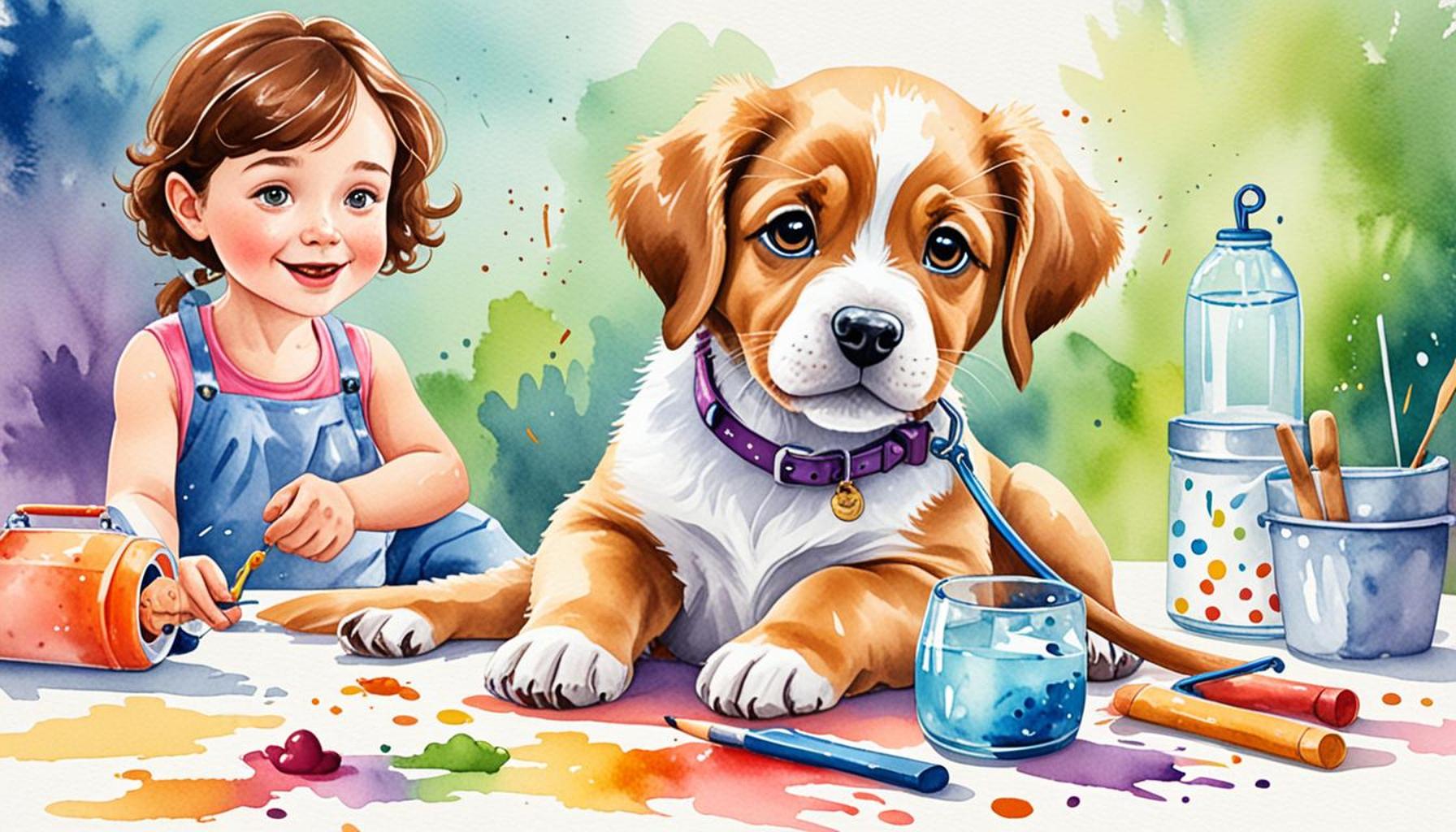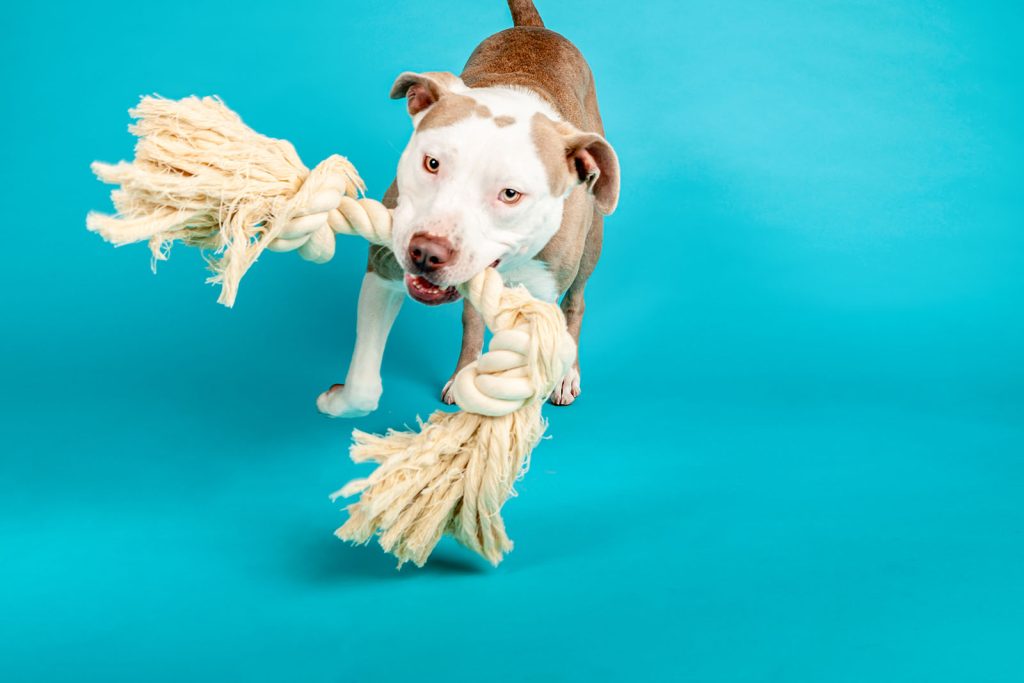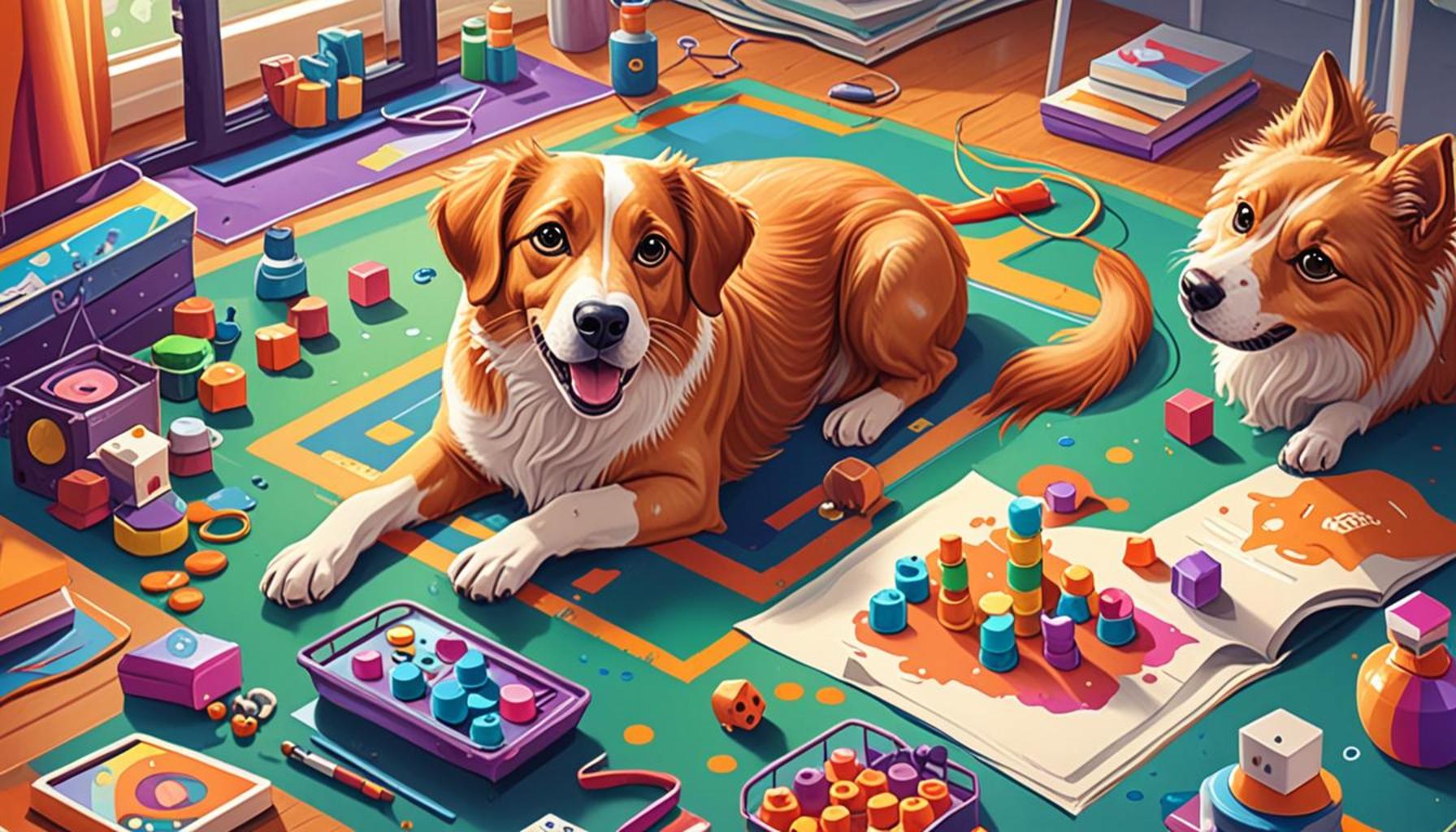Puppy Training: Establishing the Foundations for Healthy Behavior

Introduction
Bringing a puppy into your home is an exhilarating experience, one that is often filled with an abundance of joy and unconditional love. Yet, this journey entails significant responsibility as you step into the role of a trainer and caretaker, shaping your young dog’s behavior. Understanding the basics of puppy training is essential not only for developing a well-behaved pet but also for fostering a rewarding and harmonious relationship between you and your furry companion.
Training your puppy effectively serves multiple purposes. Not only does it help in curbing undesirable behaviors like chewing on furniture or excessive barking, but it also establishes a foundation for a well-adjusted adult dog. To ensure a smooth training process, here are some key aspects to consider:
- Socialization: It is crucial to expose your puppy to various environments, people, and other animals. This might involve taking your puppy to a local park, engaging with friendly neighborhood dogs, or having your friends over to meet your new pet. This exposure builds confidence in your puppy and reduces the likelihood of fear-based reactions in adulthood.
- Consistency: Using consistent commands and routines helps your puppy learn effectively. For instance, when teaching commands like “sit” or “stay,” use the same phrasing every time. Incorporating a daily schedule for meals, playtime, and bathroom breaks also reinforces stability and predictability, which puppies thrive on.
- Positive reinforcement: Rewarding good behavior with treats, praise, or even playtime encourages your puppy to repeat these behaviors. For example, when your puppy successfully performs a command, offer a treat immediately, making the connection clear. This extra motivation can work wonders in training sessions.
- Patience: Training takes time; patience is crucial for progress. Puppies may not grasp commands or desired behaviors immediately, leading to frustration for rookie trainers. Maintaining a calm demeanor and celebrating small victories can make the training experience enjoyable for both you and your puppy.
Implementing these foundational elements can significantly influence your pup’s future behaviors. A well-trained puppy is often more adaptable, friendly, and less prone to anxiety. Additionally, consistent training provides vital mental stimulation that is essential for a young dog’s development. Engaging in interactive games or puzzle toys can further enhance cognitive skills.
As you explore various training techniques, consider options such as obedience courses, agility training, or even fun trick training to discover what resonates with you and your puppy. Training is not only a tool for behavior management but also an avenue for deepening your bond. As you embark on this training journey, remember that it enriches both your experiences and your puppy’s life, fostering a partnership built on trust, respect, and shared fun.
DISCOVER MORE: Click here to learn about the role of playtime in your pet’s behavioral health

Creating a Strong Training Foundation
Establishing effective puppy training practices begins with a few fundamental principles that set the stage for positive behavior and a strong bond between you and your puppy. The early experiences a puppy has can significantly shape its future behavior, making it vital to approach training thoughtfully. By incorporating various techniques and strategies, you can instill core values and skills that will stay with your dog for a lifetime.
One of the key tips for successful puppy training is to focus on socialization. Socialization involves introducing your puppy to a wide array of settings, people, and other animals. Between the ages of 3 to 14 weeks, puppies are particularly receptive to new experiences. Exposing them to different sights, sounds, and interactions during this critical window can help reduce fear and anxiety in adulthood. Here’s how you can achieve effective socialization:
- Visit Varied Environments: Take your puppy on trips to parks, stores that allow pets, and crowded areas. The more diverse the experiences, the better adjusted your puppy will become.
- Meet Other Dogs: Arrange playdates with friendly, vaccinated dogs. This helps your puppy learn appropriate play behavior and improve its social skills.
- Invite Friends and Family: Allow your puppy to interact with different people, as this will help them become accustomed to various types of human interaction.
Another cornerstone of effective puppy training is consistency. Dogs thrive on routine, and maintaining a consistent approach will help reinforce their learning. It’s essential to utilize the same commands and cues for specific behaviors. For instance, if you are teaching your puppy to sit, consistently use the command “sit” every time. This repetition will help solidify the connection between the verbal cue and the action you want your puppy to perform. In addition to commands, having a structured daily routine that includes feeding, playtime, and bathroom breaks provides a sense of stability for your puppy.
Positive reinforcement is crucial to helping your puppy associate desired behaviors with rewards. Instead of focusing on punishment for unwanted behaviors, celebrate the good ones! When your puppy successfully follows a command or behaves appropriately, reward it immediately with treats, praise, or playtime. This technique not only encourages repeat behavior but also fosters trust between you and your puppy. Keep in mind that rewards should be enticing—using high-value treats can make the learning experience more appealing for your furry friend.
Finally, one of the most vital aspects of puppy training to remember is the importance of patience. Puppies are naturally curious and may not catch on immediately. As a trainer, maintaining a calm and encouraging demeanor is essential. Celebrate the small victories, and understand that each puppy learns at its own pace. With the right blend of love, structure, and guidance, you will be laying a solid foundation for your puppy’s future behavior.
| Advantage | Description |
|---|---|
| Enhanced Socialization | Early training establishes critical skills that promote positive interactions with people, other pets, and various environments. |
| Behavioral Control | Training lays the groundwork for good manners, reducing undesirable behaviors like chewing, barking, and jumping. |
Exploring the depth of puppy training reveals a myriad of benefits that extend beyond mere obedience. One significant advantage is enhanced socialization. By introducing your puppy to diverse environments and stimuli early on, you are fostering a sense of confidence and adaptability. As your puppy learns to interact positively with both people and other animals, it effectively minimizes fear and anxiety in unfamiliar situations, resulting in a well-rounded and stable adult dog.Moreover, another crucial aspect of responsible puppy education is behavioral control. Training does not solely focus on commands; it is pivotal in curbing unwanted behaviors such as excessive barking, chewing, or jumping on guests. By establishing a clear communication system through consistent commands and rewards, you nurture an understanding in your puppy that leads to more harmonious living.Further, integrating training into your daily routine serves as an excellent bonding activity. Enjoying structured playtime that includes learning can strengthen your relationship, portraying your role as a reliable leader in your puppy’s life. Offering positive reinforcement not only enhances comprehension but fosters trust, making it easier to address behavioral concerns in the future. As you navigate the journey of puppy training, remember that the foundations you lay today will influence your dog’s behavior for years to come, making investing time in proper training one of the most rewarding decisions you can make for your furry companion.
DIVE DEEPER: Click here to discover effective training techniques
Effective Techniques for Puppy Training
As you embark on the rewarding journey of puppy training, it’s invaluable to familiarize yourself with effective techniques that complement the foundational principles previously discussed. The world of dog training is vast, but several core methods consistently yield positive outcomes, fostering healthy behavior and a harmonious relationship between you and your pet.
Clicker training is one such method that has gained popularity among dog owners and trainers alike. This technique involves using a small handheld device that emits a distinct sound when pressed. The click serves as a marker, signifying the exact moment your puppy has performed the desired behavior. Following the click, a reward in the form of a treat or praise reinforces the behavior. This approach not only helps in clear communication but also allows for precise timing during training sessions. Research shows that animals trained with clickers exhibit quicker learning and higher retention rates, making it a compelling technique to consider.
Additionally, incorporating obedience classes into your puppy’s training regimen can be immensely beneficial. Enrolling in these classes not only provides valuable instruction from knowledgeable trainers but also exposes your puppy to a controlled social environment with other dogs and humans. Such classes often cover essential commands—like sit, stay, and come—and teach behaviors crucial for daily life. Moreover, the group setting allows you to observe other dogs in training, which can provide you with ideas and strategies for your own puppy.
Another technique that deserves attention is target training. This innovative method involves teaching your puppy to touch a specific object, such as your hand or a target stick, with its nose or paw. Once your puppy understands the concept, this can be expanded to have it perform various tasks, from simple tricks to more complex commands. Target training enhances your puppy’s focus and coordination while providing mental stimulation—an essential ingredient for a balanced and well-behaved dog.
- Use Short Sessions: Puppies have relatively short attention spans, so keep training sessions brief, generally around 5 to 10 minutes. Frequent and engaging sessions help sustain your puppy’s interest and learning.
- Maintain a Positive Environment: Ensure that your training space is free from distractions and filled with encouragement. Surrounding your puppy with positive vibes will improve its receptiveness to learning.
- Gradually Increase Challenges: As your puppy masters commands, increase the difficulty level by changing locations, adding distractions, or incorporating longer wait times before rewarding.
Moreover, understanding canine communication is a fundamental skill that all puppy owners should develop. Recognizing your puppy’s body language and vocalizations can greatly enhance your training experience. For instance, a wagging tail usually signifies excitement and happiness, while a lowered tail might indicate fear or submissiveness. Learning to decipher these signals allows for a more personalized training approach, helping you respond appropriately to your puppy’s emotional state during lessons.
Problem-solving is another critical area of focus in puppy training. Puppies are naturally curious and sometimes engage in undesirable behaviors like chewing furniture or digging holes. Instead of reacting with frustration, redirect your puppy’s energy towards appropriate activities, such as chewing on designated toys or engaging in interactive games. Providing sufficient mental and physical exercise can significantly diminish boredom, which often leads to behavioral issues.
Incorporating these diverse training techniques can significantly enhance your puppy’s learning and behavior management. By using clicker training, attending obedience classes, engaging in target training, and understanding canine communication, you create an enriching environment that promotes both healthy behavior and a deep bond with your puppy. As a devoted owner, continued education about dog training will ensure you are equipped to foster lifelong positive behaviors in your furry companion.
DISCOVER MORE: Click here to learn about the benefits of wet food for your pets
Conclusion: Building a Lifetime of Healthy Behavior
As you finalize your journey through the essential aspects of puppy training, it’s clear that establishing a strong foundation for healthy behavior is not just beneficial—it’s vital for your furry friend’s well-being. The techniques discussed, including clicker training, obedience classes, and understanding canine communication, all play integral roles in cultivating a well-adjusted puppy ready to thrive in any environment.
By employing these effective training practices, you create a positive atmosphere that encourages growth and learning. Remember, consistency is key; the more you practice and reinforce desirable behaviors, the more ingrained they will become. It’s equally important to remember that each puppy is unique, so tailor your approach to suit their individual personality and needs, embracing the learning process for both you and your pet.
Additionally, fostering an environment where problem-solving is encouraged will not only reduce negative behaviors but will also enhance your puppy’s mental stimulation, ensuring a happy and balanced life. As you continue to refine your training methods, consider seeking resources such as local training clubs, online communities, or even literature from established dog trainers. The realm of puppy training is ever-evolving, and staying informed on the latest techniques will empower you in your role as a pet owner.
In closing, the bonds forged through effective puppy training set the stage for a lifetime of companionship filled with joy, trust, and mutual respect. By investing the time and effort now, you’re paving the way for a well-behaved dog that will enrich your life for years to come. Embrace your training journey—your puppy, and your future together, will be all the better for it.



